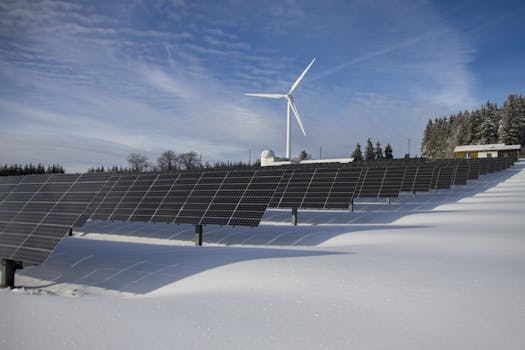Secrets of a Photovoltaic System with a Long Lifespan
As the world increasingly turns to renewable energy sources, photovoltaic (PV) systems have emerged as a popular choice for harnessing solar power. However, the longevity of these systems is crucial for maximizing investment and ensuring sustainable energy production. Understanding the secrets behind a long-lasting photovoltaic system can help homeowners and businesses alike make informed decisions. This article delves into the key factors that contribute to the durability and efficiency of PV systems.
Understanding Photovoltaic Systems
Photovoltaic systems convert sunlight into electricity using solar panels composed of numerous solar cells. These systems can be installed on rooftops, in solar farms, or integrated into building materials. The lifespan of a PV system is typically around 25 to 30 years, but with proper care and technology, this can be extended significantly.
Key Factors Influencing Longevity
Several factors play a critical role in determining the lifespan of a photovoltaic system. Understanding these can help users optimize their systems for longevity:
- Quality of Components: The materials used in solar panels, inverters, and mounting systems significantly affect durability. High-quality components are more resistant to environmental stressors.
- Installation Practices: Proper installation is essential. Poorly installed systems can suffer from issues like water leakage, which can lead to corrosion and damage.
- Maintenance: Regular maintenance, including cleaning panels and checking electrical connections, can prevent performance degradation over time.
- Environmental Conditions: Systems installed in harsh climates (extreme temperatures, heavy snowfall, or high winds) may require additional protective measures.
Choosing Quality Components
Investing in high-quality components is one of the most effective ways to ensure a long lifespan for a photovoltaic system. Here are some components to consider:
- Solar Panels: Look for panels with a high efficiency rating and a long warranty period (typically 25 years). Brands like SunPower and LG are known for their durability.
- Inverters: The inverter is the heart of the system, converting DC electricity to AC. Opt for inverters with a good track record and warranties of 10 years or more.
- Mounting Systems: Choose corrosion-resistant materials for mounting systems, especially in coastal areas where salt can accelerate deterioration.
Importance of Professional Installation
Professional installation is crucial for the longevity of a PV system. A qualified installer will ensure that the system is set up correctly, adhering to local codes and regulations. They will also assess the site for optimal panel placement, maximizing sunlight exposure while minimizing shading from trees or buildings.
For example, a case study in California showed that a residential solar installation performed by certified professionals had a 15% higher energy output over five years compared to DIY installations. This highlights the importance of expertise in achieving long-term performance.
Regular Maintenance Practices
Maintenance is often overlooked but is vital for extending the lifespan of a photovoltaic system. Here are some recommended practices:
- Cleaning Panels: Dust, dirt, and debris can accumulate on solar panels, reducing their efficiency. Regular cleaning, especially after storms or during pollen season, can help maintain optimal performance.
- Inspecting Connections: Periodically check electrical connections and wiring for signs of wear or corrosion. This can prevent potential failures and ensure safety.
- Monitoring Performance: Use monitoring systems to track energy production. Sudden drops in output can indicate issues that need addressing.
Adapting to Environmental Conditions
Understanding the local climate is essential for maximizing the lifespan of a PV system. For instance, systems in areas prone to heavy snowfall may require tilt adjustments to prevent snow accumulation. Similarly, in regions with high winds, securing panels with robust mounting systems can mitigate damage.
Conclusion
In conclusion, the secrets to a long-lasting photovoltaic system lie in the quality of components, professional installation, regular maintenance, and adaptation to environmental conditions. By investing in high-quality materials and ensuring proper care, users can significantly extend the lifespan of their solar systems, maximizing their return on investment and contributing to a sustainable future. As the demand for renewable energy continues to grow, understanding these factors will be essential for anyone looking to harness the power of the sun effectively.
